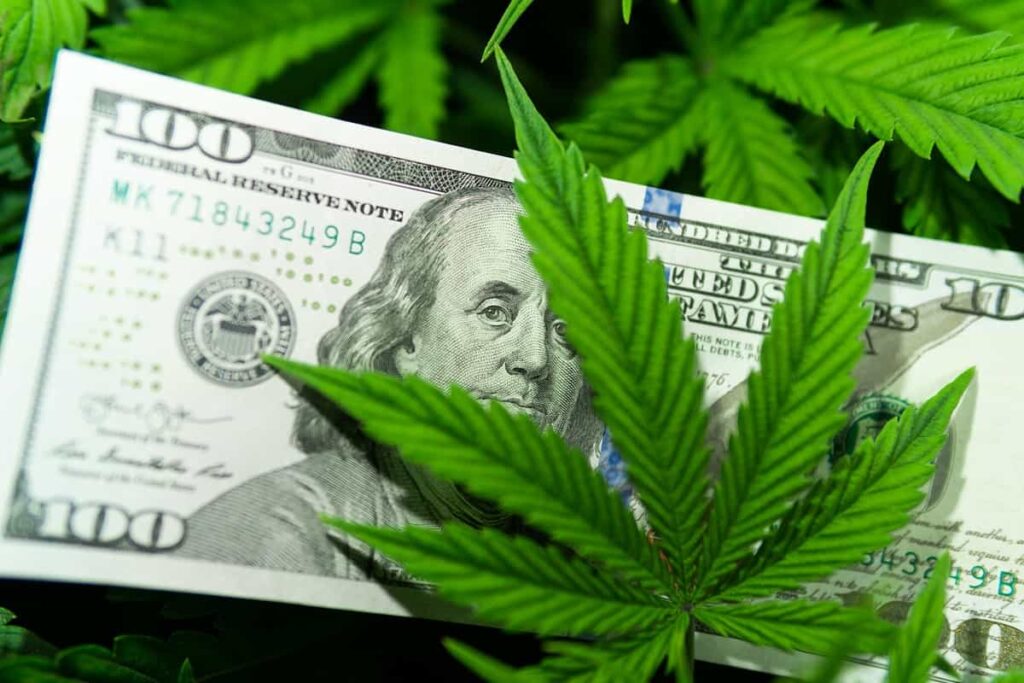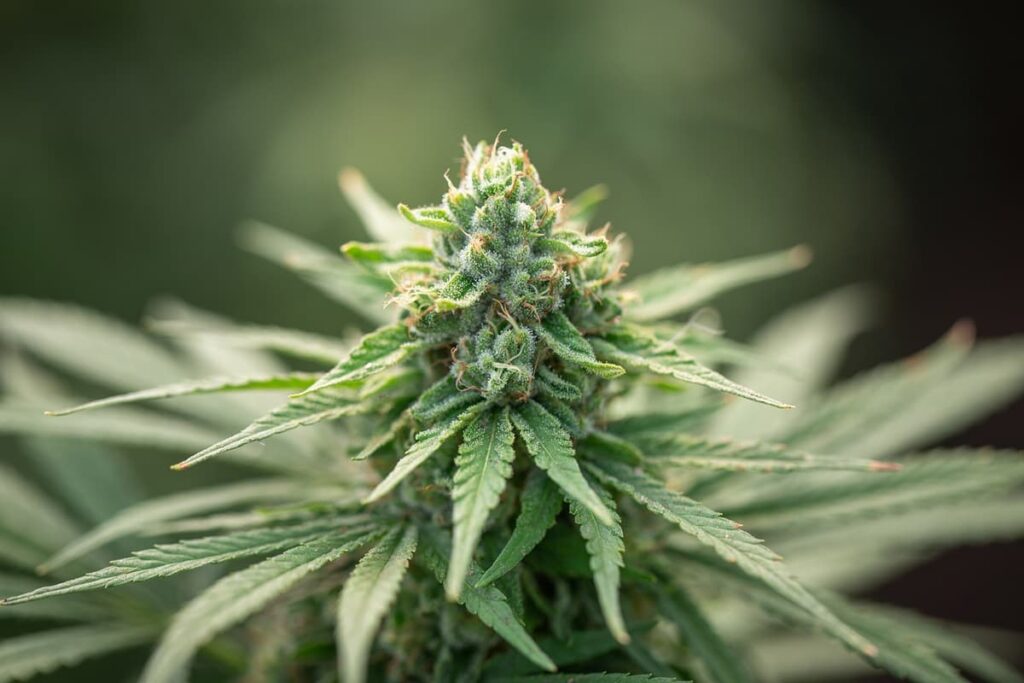Here’s Why Investors are Investing in Cannabis
Table of contents

It’s been almost five years since voters in Colorado legalized recreational marijuana, while it’s approaching 20 years when the state first enacted medical marijuana laws in 2000. It got us to thinking. And then we forgot what we were thinking about for a while. Oh, yes: What happens when you legalize weed? We’ll leave the political and ethical implications for others to debate. We’re interested in the numbers—economic numbers. There has to be a reason why so many investors are interested in investing in cannabis, even a whole slew of venture capital firms and high profile investors like Peter Thiel. We decided to look for the answer in the first State that pops into our mind when we think about legal cannabis, the State of Colorado.
We could just throw one number at you and call it a day: There are more marijuana dispensaries in Colorado state than Starbucks cafes. In fact, there are more than triple the number of places where you can buy herb than where you can get your Seattle-based bean buzz. However, you can only buy weed in less than 30 percent of the state’s 321 jurisdictions, which means a lot of the state is missing out on the economic benefits that legalization has brought, benefits like these:

How big is the industry? Trent Woloveck, vice president of Colorado-based TGS National, which franchises The Green Solution dispensary chain and its edible manufacturing company Nectar Bee, turned us onto the Marijuana Policy Group (MPG) and its groundbreaking report published last year, “The Economic Impact of Marijuana Legalization in Colorado”. The report is reputedly the first of its kind to assess the state’s legal marijuana industry against Colorado’s overall economy. It’s an interesting case study of how quickly a nascent industry—though one with a long history—spurs economic growth. Here we dive into the Colorado marijuana industry from a different perspective than we did with California earlier this year.
Bigger than the Broncos
In 2015, total sales of cannabis products reached nearly $1 billion ($996 million) in only the second full year that retail marijuana became legal (though the numbers throughout here denote both medical and retail, unless otherwise noted). One of the remarkable stories about the success of the marijuana industry is how quickly it has overtaken other sectors of the Colorado economy. According to MPG, bud is bigger business than:
- Performing arts and sports venues (better when you’re stoned) – $777.3 million
- Multi-unit residential construction (not so good when you’re stoned) – $761.5 million
- Bakeries (which no doubt are seeing increased sales thanks to stoners) – $753.5 million
- Gold mining (which does not include Acapulco Gold or Gold Kush) – $634 million

MPG’s marijuana impact model says total MJ activities generated $2.39 billion in state output, and created more than 18,000 new full-time job positions in 2015, though the U.S. Bureau of Labor Statistic has yet to add “budtender” to its Occupational Outlook Handbook. Further, MPG says marijuana creates more output and employment per dollar spent than 90 percent of Colorado industries.
Each dollar spent on retail marijuana generates $2.40 in state output, according to MPG. Compare this against general retail trade, which yields $1.88 per dollar. The more traditional (and sometimes subsidized) mining sector generates $1.79 per dollar. General manufacturing generates $1.94 per dollar, and casinos generate just $1.73 per dollar of spending.

In the big picture, however, pot only represented less than half-a-percent of Colorado’s $532 billion output as measured against numbers in 2014.
Behind the Numbers
So, is everyone in Colorado toking up? Not quite. In fact, MPG says most of the dynamic growth is simply consumers shifting from the black market to legal marijuana. By 2020, about 90 percent of the market is expected to be supplied by regulated vendors.
Also contributing to the surge in demand are so-called pot tourists, a stat that MPG is just starting to track. In 2015, visitors smoked, ate or otherwise consumed 14 metric tons of weed, which is expected to grow like a weed to 55.1 metric tons by 2020. MPG warns that the tourism sector could take a hit, so to speak, as other states legalize retail sales. Still, few if any have laws as liberal as Colorado when it comes to enjoying a Rocky Mountain high.

MPG says the industry has been a major job creator, producing 18,005 full-time equivalent jobs in 2015. About two-thirds were employed directly in the marijuana business at dispensaries, cultivation centers or manufacturing operations. The remainder of the jobs were related to secondary services, such as security guards, construction and, of course, lawyers.

Finally, MPG predicts total sales value will peak near $1.52 billion by the end of the decade, as the market becomes saturated and prices continue to fall.
A Bad Trip
Still, it seems like nothing can stop this new economic juggernaut. Unless you count the federal government. The new administration and its top attorney and Keebler elf stand-in, Jeff Sessions, is no friend to the marijuana industry. So far, the feds have done little aside from saber rattling at this point. However, in July, Attorney General Sessions sent similarly worded letters to Colorado, Washington and Oregon.
In the letter, Sessions asked Colorado Gov. John Hickenlooper “as to how Colorado plans to address … efforts to ensure that all marijuana activity is compliant with state marijuana laws, to combat diversion of marijuana, to protect public health and safety, and to prevent marijuana use by minors”. The Cannabist, an MJ-centric publication by The Denver Post, reported that though Colorado officials are taking the feds seriously, they don’t believe there is any intention to shut down the billion-dollar industry.
While states like Colorado are benefiting from individual legalization initiatives, industry insiders like Woloveck lament the lack of national standards. “The main issue with the cannabis industry today in the U.S. is the lack of scalability due to the fractured regulations across the States that are implementing medical and/or adult use programs,” he says. “There are many new shiny opportunities that come up daily with regards to the industry.”
High Returns
More recently, the latest economic reports show the industry is still smoking, even if overall growth is allegedly starting to mellow out a bit. Sales went over $1 billion for the first time in 2016, with $1.3 billion in sales. Recreational marijuana accounted for about two-thirds of sales at $875 million, with the medical side selling just under $440 million.
This year is on pace to top that number and exceed MGP’s projections for 2020 by three years earlier than predicted. Marijuana sales topped $750 million at the end of June, up 25.7 percent compared with the first half of 2016, according to the Cannabist. Our math says this year could end with $1.5 billion in sales.

All those sales mean the state and cities are adding to their own coffers through taxes, particularly on recreational sales. The state levies a 15 percent sales tax on recreation sales (as of July 1, 2017) versus only 2.9 percent for those who carry state-approved medical cards. Sales tax in the city of Denver, home to the largest number of dispensaries, is 7.15 percent for recreation and 3.65 percent on medical MJ purchases. Colorado alone has collected more than $500 million in tax revenue from the cannabis industry since recreational sales began in 2014, according to Colorado alternative weekly Westword.
Conclusion
Investors have every reason to be excited about cannabis investing given the massive impact it has on a State once it is legalized. Colorado has been at the forefront of marijuana legalization, and we don’t see that ending anytime soon. Last year, voters approved “social use” in some businesses such as coffee shops and yoga studios (we love a little dank with our downward-facing dog). The issues surrounding the Amsterdam-style on-premise consumption are still shaking out, but such a move can only mean more pot tourism in the future. All you MBAs out there should be thinking about the new opportunities this presents. Retail investors should be wary of OTC companies and instead consider indirect plays here like buying certain Colorado municipal bonds.
While young, the Colorado marijuana industry is rapidly evolving. As MPG notes:
As the Colorado market matures, it is becoming more consolidated. Larger, more competitive companies are growing, while smaller, less competitive companies struggle and eventually exit the market. This is a natural dynamic within any competitive market.
A more mature market also means more stability and less cowboy antics that could threaten the long-term viability of the industry. The State of Marijuana in the state of Colorado is green, very green. If you’re not ready to open a dispensary franchise in Colorado but still want to get in on the action, be sure to check out some of our articles on investing in cannabis here and here.
Sign up to our newsletter to get more of our great research delivered straight to your inbox!
Nanalyze Weekly includes useful insights written by our team of underpaid MBAs, research on new disruptive technology stocks flying under the radar, and summaries of our recent research. Always 100% free.














